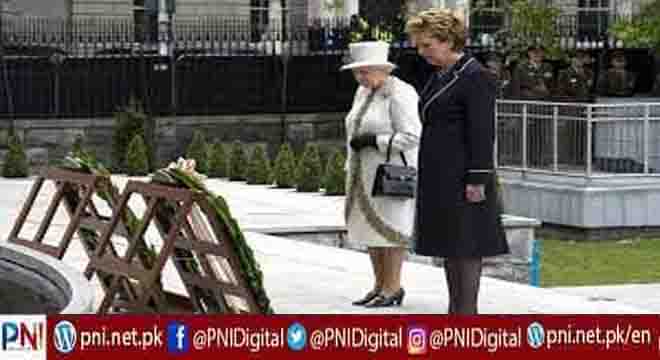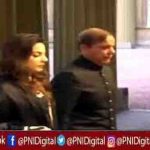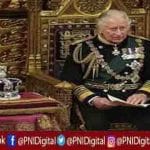London, Sept 8 (AFP/APP):Of all Queen Elizabeth II’s state visits, her 2011 trip to Ireland was perhaps the most transformative, healing deep-rooted unease and putting Anglo-Irish relations on a new footing.
The ground-breaking visit at the age of 85 saw her win praise for facing thorny issues head-on, in a trip that would have been unthinkable even at the turn of the millennium.
No British monarch had set foot in what is now the Republic of Ireland since her grandfather king George V in 1911, before independence from Britain in 1922.
It was calculated that Queen Elizabeth had visited 129 countries before setting foot across the UK’s only land border.
Ireland mounted its biggest-ever security operation to protect her.
Irish Republican Army (IRA) paramilitaries had assassinated her cousin Lord Louis Mountbatten in 1979.
An IRA splinter group issued threats ahead of the visit and there was an early rash of bomb alerts, meaning security was extremely tight at the start of the four-day trip on May 17.
On day one, whole blocks of Dublin were sealed off around the British head of state, leaving the streets eerily quiet.
But by the end of the trip, the tension had eased so much that she even did a spontaneous walkabout in Cork, underlining the extent to which old wounds had healed.
For many, hearing the British monarch open her keynote speech by speaking a few words in Irish — a stunned president Mary McAleese repeatedly said “wow” — was the biggest of several small gestures that had a powerful effect.
– ‘Weight of history’ –
The trip started with a bold statement: laying a wreath in remembrance of those who died fighting to free Ireland from British rule.
She visited Croke Park stadium, the site of the 1920 “Bloody Sunday” massacre perpetrated by British forces which left a deep scar in the Irish consciousness.
The queen also paid tribute to the Irish World War I dead who were virtually ignored at home due to deep-rooted bitterness about them serving in British uniform while their countrymen were battling for independence.
A tour of the medieval Rock of Cashel monument saw the first handshake between the British monarch and an official from hardline republicans Sinn Fein, the political wing of the IRA and vocal opponents of the trip.
But it was her keynote speech at Dublin Castle, in which she directly addressed “the weight of history”, that went a long way towards finally healing centuries of bad blood.
Describing Britain and Ireland as equal partners, she offered her “deep sympathy” to all those who had suffered “as a consequence of our troubled past”, saying the legacy of “heartache, turbulence and loss” was “sad and regrettable”.
“With the benefit of historical hindsight, we can all see things which we would wish had been done differently; or not at all,” she added.
The visit was viewed as exceeding expectations.
Former British Prime Minister John Major wrote in The Times newspaper that it “lifted an old and dark shadow, cemented a modern relationship and prepared the ground for a fertile future”.
Michael Anderson, a research fellow at University College Dublin, told AFP at the time that Irish people had been “astonished” by the monarch’s “sincerity and dignity”.
Speaking in Irish held “incredible significance” and symbolised the big impact of small gestures, he explained.
“This was a genuine reconciliation of something that went on for 800 to 900 years,” he said.
Michael D Higgins paid a return state visit in 2014, the first by an Irish president.
Follow the PNI Facebook page for the latest news and updates.








